If you don’t yet know his work, Mark Leibovich is the national correspondent for The New York Times Magazine. He does terrific profiles of folks whom you may or may not like, ranging from Glenn Beck (September 29, 2010) to Joe Biden (March 28, 2009) to Mitt Romney (June 16, 2007)—to mention but a few. I find that Leibovich’s work is almost always fair, insightful, informative, and entertaining. So I looked forward to his book on our contemporary nation’s capital, a city I once knew intimately, but now only visit about a half-dozen times each year—or just enough to have watched it sink from the edge of the swamp that it was built on, into the drainage of swirling lobbyists and special interests that characterizes it today.
Mark Leibovich gets this, and he does not disappoint with This Town: Two Parties and a Funeral-Plus, Plenty of Valet Parking-in America’s Gilded Capital. Deservedly, within days of the book’s release, it was at the top of the New York Times and Washington Post bestseller lists. Yet I am not sure that everyone understands exactly what Leibovich is writing about, so I thought I might explain.
Where Is “This Town” Actually Located?
Do not mistake this for a book about Washington, DC, the some 68 square miles along the Potomac River that was given to the nation for its capital by the states of Maryland and Virginia. Nor is it a story about the countless thousands of faceless federal employees and those who work at public interest groups at the seat of government, which today reaches way beyond the District of Columbia, into the surrounding area of Montgomery and Prince Georges Counties in Maryland; as well as Arlington and Fairfax Counties, along with the cities of Alexandria, Fairfax, and Falls Church in Virginia. In fact, the players in This Town operate in all these locations.
If This Town is made into a movie, they will scout for locations in the northwest quadrant of the District; the offices and hotels along Pennsylvania Avenue, K Street, 16th Street, Massachusetts Avenue, Wisconsin Avenue and Connecticut Avenue, all in the northwest, as are the museums along the National Mall, and neighborhoods like Georgetown, Embassy Row, Foggy Bottom, Dupont Circle, Cleveland Park, and Friendship Heights. Necessarily, there will be even more locations outside the District, like Old Town Alexandria, Great Falls, McLean, Vienna, and Tysons Corner, plus Fairfax and Loudoun Counties, which are all in Virginia. Along with Chevy Chase, Bethesda, and Potomac, plus Montgomery Country in Maryland. As I was reading This Town, my head bounced around all these locations although they are only occasionally mentioned.
Actually, This Town is found in all these venues. But it covers far more than any location. This Town is a state of mind, something of an inchoate perception, if not a symbol, maybe even a goal for many. Leibovich writes that he is reporting on the “insider swarm,” the people of influence who work, play, and live either in or around the Capital City, who are known by various names: “Permanent Washington,” “The Political Class,” “The Chattering Class,” “The Usual Suspects,” “The Beltway Establishment,” “The Echo Chamber,” “The Echo-System,” “The Gang of 500,” “The Gang of 600,” “The Movable Mess,” “The Club,” and “This Town”—as the author explains in the sense of the “cliché of belonging, knowingness, and self-mocking civic disdain[:] “Well, I guess that’s the way it is in This Town.”
Profiles of the Encouraged
When returning to the Washington Beltway, over the last four decades, I have made a point of only visiting with old friends. Only on rare occasions do I attend events of the nature that run through the narrative of This Town. Yet I know, or recognized by reputation, virtually everyone Leibovich mentions in his book.
I confess that I first attempted to give Leibovich’s book the usual Washington read, which meant that I planned to start with the index to see if my name or the names of others I knew were mentioned. But Leibovich obviously knows his readers, so he did not include an index, which undoubtedly accounts for the fast sales that shot the book on to the bestseller lists. The Washington Post, however, made it easy for their readers to see if they themselves are in the index, by creating and posting an unofficial index of This Town online.
Anyone who is not a political junkie may find many of the people profiled and named in this book obscure. Indeed, the book is largely a stream of profiles and name drops in varying contexts—such that those who are not in the know will not recognize many of the characters, other than those who hold (or held) prominent public office or are (or were) part of the political media. For example, anyone likely to pick up this book will recognize political figures like Michele Bachmann, Joe Biden, John Boehner, Bill & Hillary Clinton, Tom Daschle, John & Elizabeth Edwards, Rahm Emanuel, Robert Gibbs, Alan Greenspan, David Gregory, Joe Lieberman, Barack Obama, Nancy Pelosi, Mitt Romney, and Debbie Wasserman Schultz. But they may or may not know folks like Bashar al-Assad, Lee Atwater, John Breaux, Clark Clifford, Ken Duberstein, Marlin Fitzwater, Kinky Friedman, Leslie Gelb, Stephen Hess, Terry McAuliffe (unless you live in Virginia or nearby), Jerrold Nadler, David Obey, and Jody Powell. This is only a small sampling of the 739 people who are named. I did not similarly skim through the media people’s names, but I did note that, interestingly, the media people seem to fare better in This Town than political people do, albeit with a few exceptions.
What was best about this book for me is that many of my friends who are true forces of influence in Washington, neither stay-at-homes nor showboats, were passed over, a fact which I am sure has delighted them. While Leibovich treats no one harshly, with the treatment of the Clintons maybe the toughest, only a truly oversized ego would want to be included in this hefty work, which has been accurately described by the Post index as a “book on self-promotion, self-enrichment and self-perpetuation.”
Reactions to This Town
Mistakenly, I think too many readers (and reviewers) view This Town at the level of gossip columns. In fact, it is much more. It is a rather telling analysis of the way the Capital City works today. This is not a work that is going to end up in anyone’s law library, yet for anyone who wishes to better comprehend how our nation’s capital city functions, it is a must-read.
From my point of view, Leibovich is a relative newcomer to Washington. He has been covering it for a mere sixteen years, which landed him there first at the time of the Lewinsky scandal, during Bill Clinton’s second term. Ironically, it was at that time when I had my first extended return to Washington, when I was an “anchor buddy” for the MSNBC coverage of the Clinton impeachment proceedings, and I spent some three months back at my old haunts. I was able to get a true feel for the city and those running things vis-a-vis my earlier years in Washington. Most noticeable was the growing no-compromise partisanship by Republicans, and the expansive growth and resulting power of the K Street lobbying firms, accompanied by the increasing influence of money in Washington politics.
Back in 2009, I reviewed So Damn Much Money by Robert Kaiser for the Boston Globe. Kaiser tracked the influx of money in Washington over the preceding three decades, largely by looking at the rise of the leading lobbying firm Cassidy & Associates. (I suspect Gerald Cassidy and his firm were delighted to not even get a mention by Leibovich.) Nonetheless, This Town not only picks up where Kaiser’s work ended, but Leibovich also paints on a broader canvas the impact that all that money has had, on both Republicans and Democrats.
No one summed it up better than Christopher Buckley, when he reviewed This Town for The New York Times Book Review: “Not to ruin it for you, but: if you already hate Washington, you’re going to hate it a whole lot more after reading Mark Leibovich’s takedown of the creatures who infest our nation’s capital and rule our destinies. And in case you are deluded enough as to think they care, you’ll learn that they already hate you. Leibovitch quotes his former Washington Post colleague Henry Allen: ‘Washington feels like a conspiracy we’re all in together, and nobody else in America quite understands, even though they pay for it.’”
For anyone interested, I have included a few other leading reviews that I found interesting: Daily Kos (by Susan Gardner), New York Times (by David Shribman), New York Times Book Review (by Christopher Buckley, whom everyone should know), Pittsburgh Post-Gazette (by Dan Simpson ), Politico (by Ben Smith), Salon (by Alex Pareene), Slate (by David Weigel) and Washington Post (by Carlos Lozada). They too add to our understanding of this work.







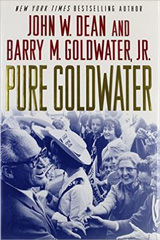
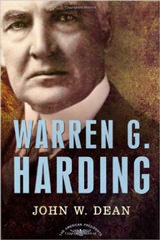
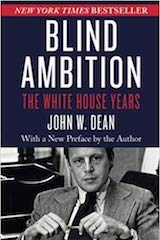
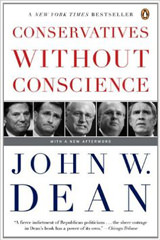
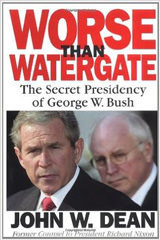
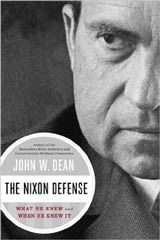
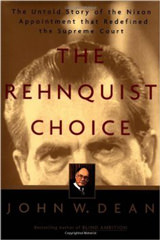

Actually I think that Mr Dean is underestimating the significance of the personal connections involved here, but it’s part and parcel of how your personal information can be used to manipulate you and take away your freedom. This book is actually potentially quite dangerous insofar as it would be a good starting point for someone who wants to build a dossier on any of these influential people. Imagine someone started with a list of your friends and wanted to find out about you. One next step might be to impersonate various friends while approaching others, seeking to ‘reminisce’ about your ‘mutual friend’, but with the real objective of collecting new information to leverage against other personal relationships. This approach might not reveal the dirt that can be used for threats or blackmail, but even finding out about interests and strengths can be used to manipulate the target.